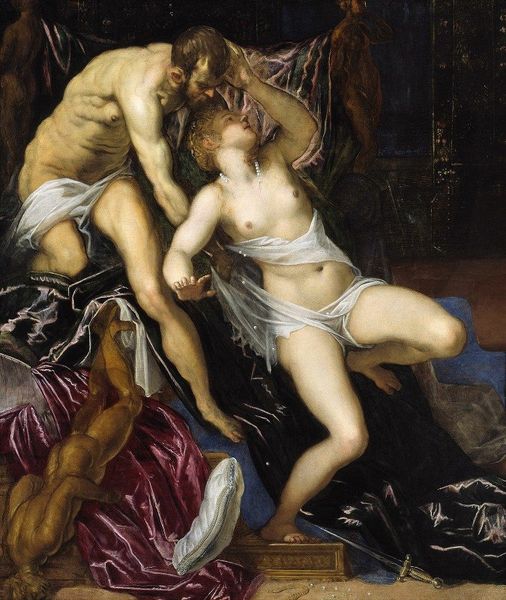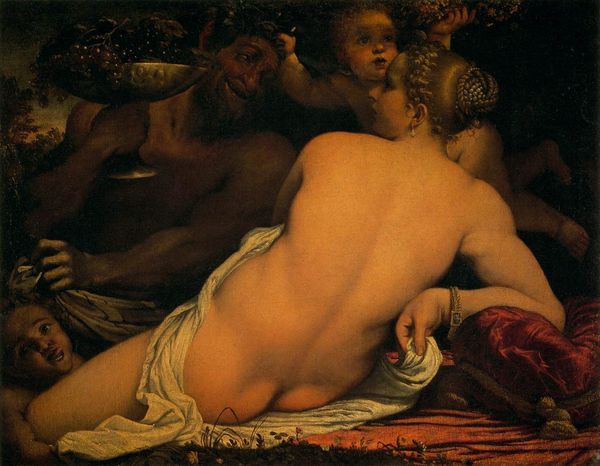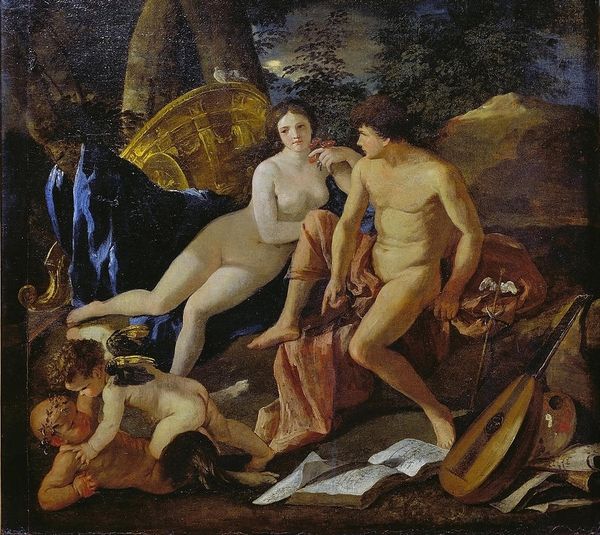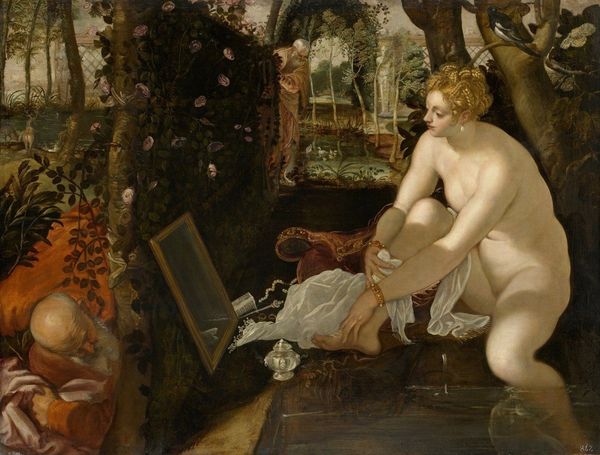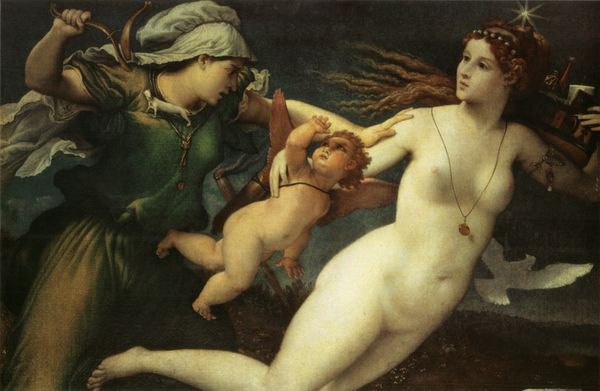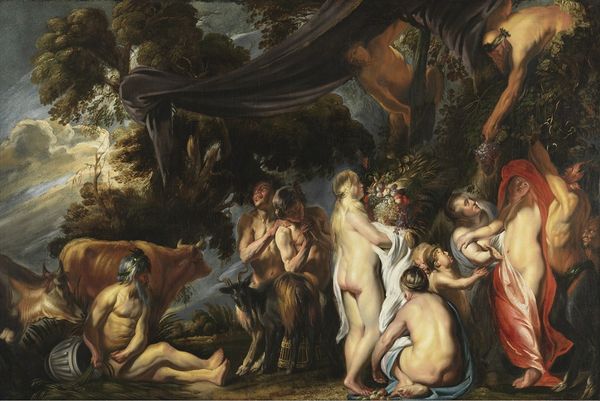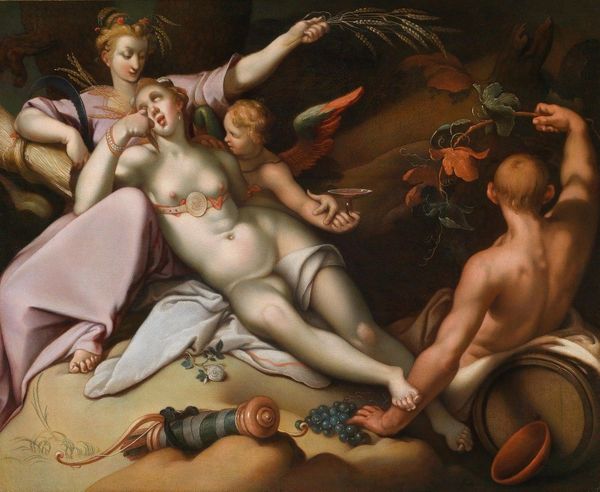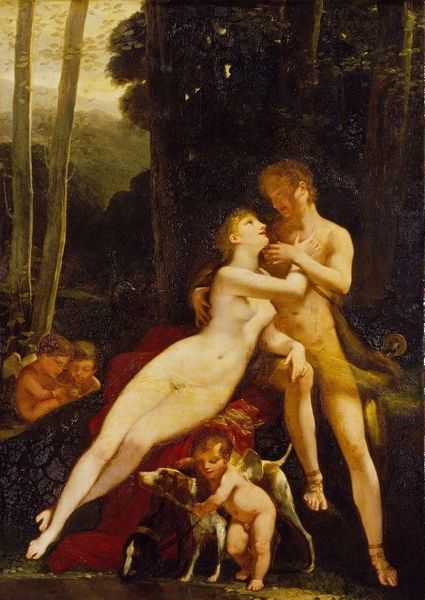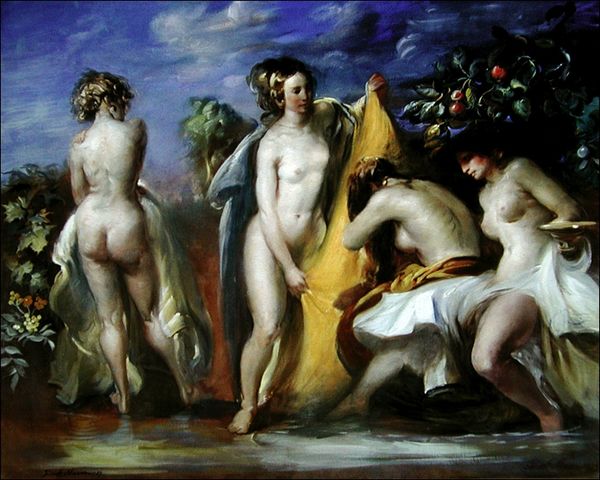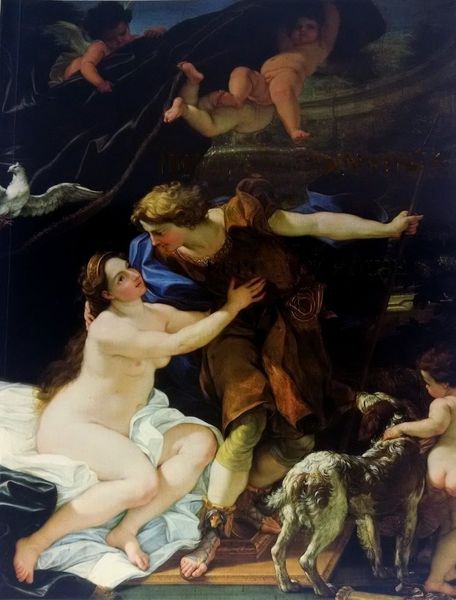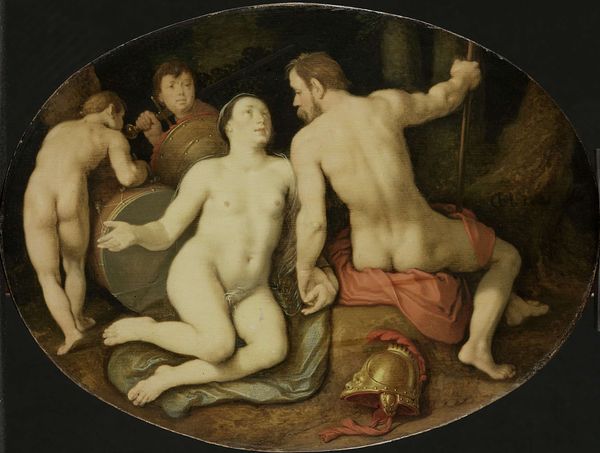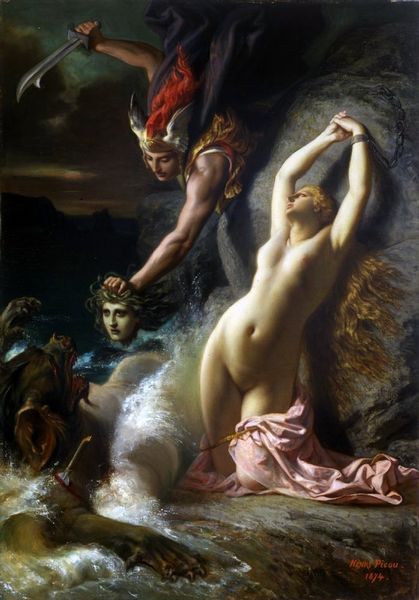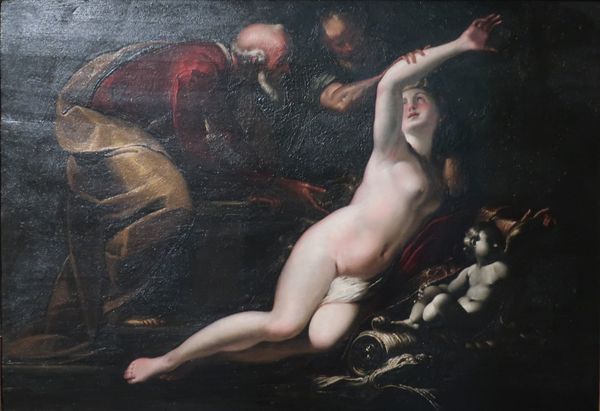
painting, oil-paint
#
painting
#
oil-paint
#
mannerism
#
genre-painting
#
history-painting
#
nude
Dimensions: height 77.5 cm, width 64 cm, height 99.5 cm, width 85 cm, thickness 5 cm
Copyright: Rijks Museum: Open Domain
Editor: We’re looking at "Bathsheba at her Toilet," an oil painting from 1594 by Cornelis Cornelisz van Haarlem. The way the figures are arranged—their postures and interactions—it feels very deliberate. I'm curious, what compositional choices stand out to you most? Curator: Observe the torsion in the figures' bodies, particularly Bathsheba's. Note also the painter's handling of light. The Mannerist style manifests through elongated forms and contrived poses, contributing to the artificiality inherent within the work. Is this departure from naturalism apparent to you? Editor: I see it. Their forms seem exaggerated. But what does it all mean? What's the relationship between form and content here? Curator: Consider the pictorial structure, devoid of conventional emotional depth, thereby rendering the subject subservient to aesthetic formalism. Examine how line, color, and the arrangement of figures establish the picture’s essence, rather than overt narrative storytelling. Can the semiotic potential here transform mere depiction into active construction? Editor: So, instead of focusing on the *story* of Bathsheba, we’re supposed to analyze how the artist *built* the painting, its pure structure? Curator: Precisely. The subject provides a foundation, yet its significance resides primarily in facilitating an exercise in artistic innovation and display. We’re faced with pure, detached formalism, a testament to art for art’s sake. Editor: This makes me consider what “story” is appropriate for art. Instead of historical context, it becomes about art's independent, abstract language. I never thought about analyzing it this way! Curator: It is my hope you depart from this conversation armed with alternative modes for critically decoding artistic endeavors, emphasizing intrinsic properties beyond extrinsic connections.
Comments
rijksmuseum about 2 years ago
⋮
The beautiful Bathsheba bathes out of doors assisted by two maidservants. King David spies the young woman from the roof of his palace and instantly falls in love. Although he is not depicted in the painting, David’s presence is suggested by the castle in the distance. Curiously, the servant seen from behind has a male body.
Join the conversation
Join millions of artists and users on Artera today and experience the ultimate creative platform.
